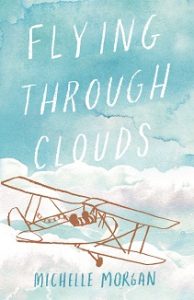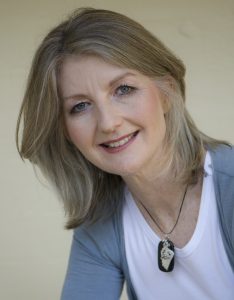The Challenges and Joys of Writing Historical Fiction for Teenagers
 Flying through Clouds is my new historical novel for young adults, and follows on from my first novel, Racing the Moon, which was published in Australia in 2014. Although both novels share the same main character and are set mostly in Sydney in the 1930s, the stories are quite different, and so were my motivations for writing them.
Flying through Clouds is my new historical novel for young adults, and follows on from my first novel, Racing the Moon, which was published in Australia in 2014. Although both novels share the same main character and are set mostly in Sydney in the 1930s, the stories are quite different, and so were my motivations for writing them.
Flying through Clouds is about Joe Riley’s dream of becoming an aviator and his problematic transition from adolescence to adulthood, while Racing the Moon focuses on Joe’s experiences at school and his transition from childhood to adolescence. Whereas, Flying through Clouds was inspired by two historical events – the opening of the Sydney Harbour Bridge in March 1932, and the landing and take-off of Southern Cross by Sir Charles Kingsford Smith on Seven Mile Beach in January 1933, Racing the Moon was inspired by stories my uncle told me about growing up during the Depression
Before writing the books, I immersed myself in research. I wanted to understand how people lived in the 1930s – the food, clothing, housing, schools, work opportunities, social conditions, transport, how they communicated with each other, and what they did on the weekends. I needed to become familiar with that world before developing my characters and narrative. The most difficult research for Flying through Clouds, was learning how to fly a 1930 de Havilland Gypsy Moth.
I needed to understand the steps involved and the terminology that was used. I read books about famous aviators and their flying adventures, and watched technical videos on how to fly a Gypsy Moth plane. I interrogated everyone I knew who had flown before, and was lucky enough to come across Prue Mason, a children’s author and pilot with extensive experience flying old planes. I learnt a lot from Prue, who edited an early draft of my flying chapters.
An essential element of any story is getting the voice right. This depends on who your narrator is and what perspective you’ve chosen to write from. With Racing the Moon and Flying through Clouds I chose to tell the stories in the first person from Joe’s point of view and mostly in the present tense. I wanted the readers to be able to experience the world of the 1930s through Joe’s eyes, to be accomplices in all his well-intentioned but bad choices. But the first person also has its limitations because the narrator can’t possibly know everything that’s going on around them or inside the heads of other characters.
 It was a challenge to develop the voice, behaviour and personality of a teenage boy growing up in the 1930s. I read widely but also observed significant males in my life, and dug deep to find the rebellious teenager within. Apart from developing Joe’s voice, I had to develop personalities and quirks for all my characters.
It was a challenge to develop the voice, behaviour and personality of a teenage boy growing up in the 1930s. I read widely but also observed significant males in my life, and dug deep to find the rebellious teenager within. Apart from developing Joe’s voice, I had to develop personalities and quirks for all my characters.
I often use dialogue to reveal character. My enthusiasm for using dialogue springs from my love of theatre and playwriting. When I’m stuck, I read more books or search for old photos, videos and podcasts for inspiration. The National Library of Australia has a brilliant online database called Trove, without which I don’t think I could’ve brought Flying through Clouds to life. It’s only when I can visualise the world I’m writing about that I can develop the characters and story.
When I have a good understanding of my characters and the world in which they live, I plot the main turning points of the story. And there’s no story without conflict. But the conflict has to come from the interaction of my characters. I evaluate every scene that I come up with – What impact will it have? How credible is it? Will it drive the story forward and develop the characters?
I spent two years editing Flying through Clouds, which is a bigger novel than Racing the Moon, and has sub-plots and a more complex structure. Each turning point in the novel had to come at just the right time and create tension, as well as propel the story towards the climax. Critical feedback from professional editors is crucial to developing a manuscript towards publication, and I was fortunate to work with two talented editors on Flying through Clouds. A structural edit in 2015 led to a much tighter plot, a few less chapters and a reduced word count. The copy edit in late 2016, picked up problems with grammar, style, voice, punctuation and any inconsistencies in the text. The copy edit also inspired me to further develop voice and characterisations.
When writing for teenagers, it’s important to have interesting multi-dimensional characters and a strong narrative. Although there are many challenges in writing historical fiction for young adults, there is joy as well. Like when you’ve been working on a scene for days and you finally get the dialogue and the voice right. And then there’s the joy of seeing your book in print for the first time, or of talking about your book, or having readers share their reviews of your book.
I hope that Flying through Clouds engages readers with its compelling blend of humour, drama and historical detail, and will encourage teenagers, in particular, to read more exciting books about our fascinating history.
—
Michelle Morgan is a full-time writer who lives in Australia. Flying through Clouds is Michelle’s new historical novel for young adults, which will be published in April 2017. Michelle’s first novel, Racing the Moon, was published by Allen & Unwin in 2014, and released in the UK and US in 2015. Four of her plays have been performed in Short Play festivals in Sydney, Newcastle and Armidale. She has also co-written several songs with her husband, Luke.
Find out more about her on her website http://www.michellejmorgan.com.au/
Follow her on Twitter @mjmorganwriter
Category: Contemporary Women Writers, How To and Tips

























